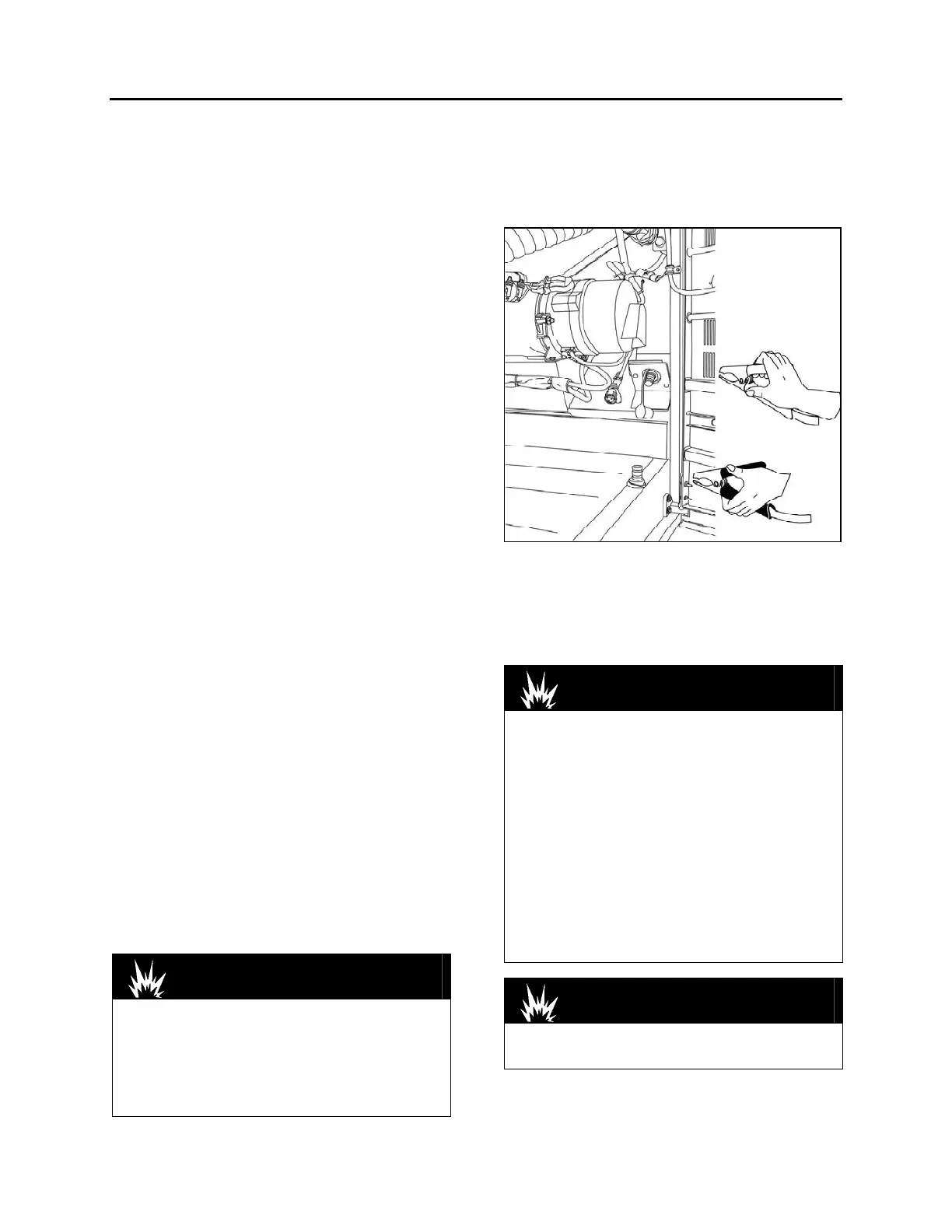Section 06: ELECTRICAL
PA1562
19
3.6.1 Battery Charging Guide
Fast Charging Rate
20 amps @ 3-¾ hours
30 amps @ 2-½ hours
40 amps @ 2 hours
50 amps @ 1-½ hours
Slow Charging Rate
5 amps @ 15 hours
10 amps @ 7-½ hours
The time required for a charge will vary
according to the following factors:
Size of Battery
For example, a completely discharged large
heavy-duty battery requires more than twice the
recharging time of a completely discharged
small passenger car battery.
Temperature
For example, a longer time will be needed to
charge any battery at 0
o
F (-18
o
C) than at 80
o
F
(27
o
C). When a fast charger is connected to a
cold battery, the current accepted by the battery
will be very low at first, and then in time, the
battery will accept a higher rate as it warms.
State of Charge
For example, a completely discharged battery
requires more than twice as much charge than a
half-charged battery. Since the electrolyte is
nearly pure water and a poor conductor in a
completely discharged battery, the current
accepted is very low at first. Later, as the
charging current causes the electrolyte acid
content to increase, the charging current will
likewise increase.
Charger Capacity
For example, a charger which can supply only 5
amperes will require a much longer period of
charging than a charger that can supply 30
amperes or more.
3.6.2 Emergency Jump Starting With Auxiliary
(Booster) Battery.
DANGER
Off-board battery charger with a start boost
facility must not be used to jump start the
vehicle. This could damage the electrical
system. Do not jump start vehicles equipped
with maintenance-free batteries if the test
indicator is light yellow.
Booster Block
On X3-45 coaches, booster block is located
near the preheater in the engine compartment
on the R.H. side and is accessible through
engine R.H. side door (Fig. 15).
FIGURE 15: BOOSTER BLOCK 06623
Both booster and discharged batteries should be
treated carefully when using jumper cables. A
vehicle with a discharged battery may be started
by using energy from a booster battery or the
battery from another vehicle.
DANGER
Jump starting may be dangerous and should
be attempted only if the following conditions
are met:
The booster battery or the battery in the other
vehicle must be of the same voltage as the
battery in the vehicle being started, and must
be negative grounded.
If the booster battery is a sealed-type battery
without filler openings or caps, its test
indicator must be dark or a green dot must be
visible. Do not attempt jump starting if the test
indicator of the booster battery or the
discharged battery has a light or bright center.
DANGER
Follow the procedure exactly as outlined
hereafter. Avoid making sparks.
Wear eye protection and remove rings, watches
with metal bands and other metal jewelry.

